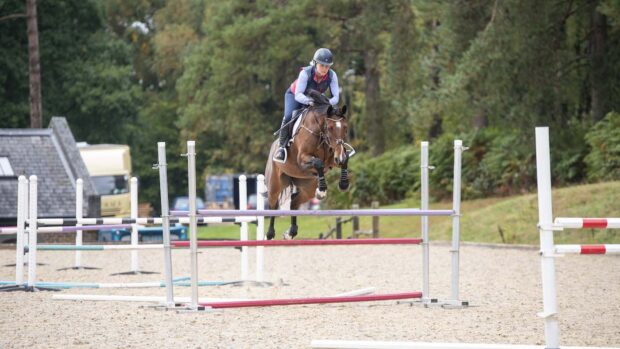At the recent International Eventing Forum (4 February 2019), held at Hartpury, Irishman Tom Holden, who travels the world designing showjumping tracks, was on hand to share some of his encyclopedic knowledge on the sport.
Here Tom shares some of his course-designing secrets…
1. Building a vertical as the first fence challenges riders to be on it from the start — they don’t get the luxury of an oxer to check they have the right amount of impulsion to carry them around the rest of the course successfully. This rewards correct and positive training of both horse and rider.
2. Rollbacks should be built to a vertical, unless horse and rider combinations are very experienced.
3. Don’t always use fillers in fences as they can hide mistakes — a bold filler will help a horse out by getting them into the air.
4. Water trays will sit flush to the front rail of a fence if you want to test combinations.
5. If I was building for a top level competition from a vertical with a water tray, I would then follow it with a very wide oxer as this will reward good riding.
6. The level of difficulty between eventing showjumping and pure showjumping isn’t very different at all, apart from classes such as the Global Champions Tour and the Spruce Meadows Masters.
7. I think in the next 10 years, courses will be more intense with more efforts within 90 seconds.
Article continues below…
You might also be interested in:

Learn from the best: Richard Waygood’s tips for showjumping and cross-country riding success
At the 2019 renewal of the International Eventing Forum Richard Waygood shared some of his expertise on how to help

Subscribe to Horse & Hound magazine today – and enjoy unlimited website access all year round
8. I also think that the fillers and strong colours we use in showjumping courses at the moment will peter out and you will start to see fewer fillers and more pastel colours and plain-coloured poles as these are more difficult for horses to focus on. From there we can start to use different plain colours in one fence to up the difficulty level even further.
9. Floral decoration around a fence helps a horse to judge the obstacle and its take-off point. So by removing floral decoration, or perhaps by moving it away from a fence, and maybe even using less bold wings, will also help to make courses around the world more technical. I instead like to use floral islands at either end of an arena to help regain focus of horse and rider.
For all the latest equestrian news and reports, don’t miss Horse & Hound magazine, out every Thursday




